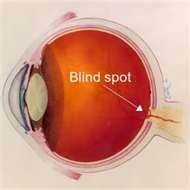 Part of the evidence for organic evolution involves imperfections in organisms. One of the alternative hypotheses - namely: creation by a powerful god - apparently predicts perfection. So: documenting the imperfections of organisms counts against the hypothesis of divine creation. The imperfections involved are often due to:
Part of the evidence for organic evolution involves imperfections in organisms. One of the alternative hypotheses - namely: creation by a powerful god - apparently predicts perfection. So: documenting the imperfections of organisms counts against the hypothesis of divine creation. The imperfections involved are often due to:
- Genetic drift;
- High mutation rates (devolution);
- Historical and developmental constraints;
- Changing environments;
- Local maxima;
- Shortage of time;
One problem is that a big part of the reason why the original argument worked was that it assumed omniscience and omnipotence on the part of the divine creator. Human intelligent designers are much more fallible - and their productions are themselves imperfect. This makes distinguishing between human intelligent design by human designers and products of evolution and natural selection acting on cultural variation more challenging.
The other problem is that few seriously dispute the idea that culture is partly the product of human intelligent designers. Any attempt to find intelligent design by humans will probably find lots of it. This contrasts with the situation with organic evolution - where we have no clear signatures of intelligent design at all.
I've described my resolution to this previously, in articles titled:
To briefly attempt a summary: In cultural evolution, intelligent design is generally best modeled as a type of mutation event. Relaxing the traditional constraints on mutation in evolutionary theory runs the risk of it losing its predictive power - but there are still constraints. Individual cavemen still can't conjure up spacecraft designs out of nothing.
Rather than viewing intelligent design and evolutionary theory as opposed hypotheses, modeling intelligent design as a part of evolution helps in another way: we can use multi-level models of evolutionary dynamics to delve inside the process of intelligent design and see how it works. Copying with variation and selection is ubiquitous in the brain. Information is copied whenever a signal passes down a branching axon. We can use classical evolutionary theory to study these dynamics and explain intelligent design in naturalistic terms.
Evolutionary theory is well accustomed to the idea that selection processes operate at many levels. If you put a bacterium in the top of an organism and later observe a antibiotic-resistant bacteria in its feces there's no need to invoke miracles or saltationist macromutations. Instead, a multi-generation selection process has gone on inside the organism, creating antibiotic-resistance as an adaptation. The same sort of thing goes on inside brains in cultural evolution. The ideas that come out of organisms are partly the product of a complex section process taking place inside the brain. Selection takes place between nerve impulses, synapses and higher level structures - such as thoughts and ideas. The result is intelligent design. Intelligent design can be usefully seen as being the product of evolutionary forces within the brain.
This all seems hard for many evolutionists to swallow. Many have been trained to see intelligent design as the enemy. Picturing intelligent design as part of evolution is so indigestible to them that some of them visualize a future dominated by intelligent design as an overthrowing of evolution - instead of as its culmination. The demonization of evolution is also sometimes involved. Apparently evolution is responsible for our base, animal aspects, and our mission is to dismantle the products of natural selection and enter a new era of intelligent design. Darwin probably started all this off with his comment about the: "clumsy, wasteful, blundering low and horribly cruel works of nature". This is a one-sided view of evolution. Evolution is also responsible for all that we love and cherish in the world. The demonization of evolution seems inappropriate to me.










No comments:
Post a Comment